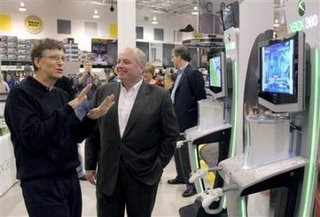AT&T Inc. also didn't meet the deadline.
The Federal Communications Commission had given providers of Internet-based phone service 120 days to comply with its order requiring enhanced 911, or E911, in all their service areas.
The deadline to show the government where E911 is available was Monday. House and Senate lawmakers had urged FCC Chairman Kevin Martin to give companies more time and more tools to speed deployment, but no extension was granted.
In its compliance report to the FCC, Vonage said only 26 percent of its customer base had full E911 services. The company — which has more than 1 million subscribers — said it was capable of transmitting a callback number and location for 100 percent of its subscribers, but it still was waiting for cooperation from competitors that control the 911 network.
Vonage should have two-thirds of its customers with full E911 capabilities in the next 30 days, the company said.
AT&T told the FCC that 65 percent of its customer base had E911 service. AT&T offers Voice over Internet Protocol, or VoIP, to about 57,000 customers through its CallVantage service.
SunRocket, which has more than 50,000 subscribers nationwide, said it had equipped 96 percent of its customers with full 911 services.
Citing public safety concerns, the FCC in May ordered companies selling VoIP to ensure that callers can reach an emergency dispatcher when they dial 911. The dispatchers also must be able to tell where callers are located and the numbers from which they are calling.
VoIP providers were told that if they failed to meet the deadline they could no longer market their service or accept new customers in areas that didn't have enhanced 911. They will not have to disconnect current customers who don't have full 911 service, as some providers had feared.
The FCC wouldn't discuss possible enforcement actions against offending companies. "At this stage, the agency is focused on the compliance filings by VoIP providers," spokesman David Fiske said.
Voice over Internet Protocol shifts calls from wires and switches, using computers and broadband connections to convert sounds into data and transmit them via the Internet. In many cases, subscribers use conventional phones hooked up to high-speed Internet lines. But the service can be mobile, making it difficult to ensure the call goes to the correct local emergency center.
There are about 3.6 million VoIP users in the United States. Of those, about half get their service from cable TV companies that already provide enhanced 911 capabilities. Other providers offer a 911 service that directs emergency calls to a general administrative number, but those lines haven't always been staffed around the clock.
The order applies to VoIP that uses the public phone network to place and terminate calls.







